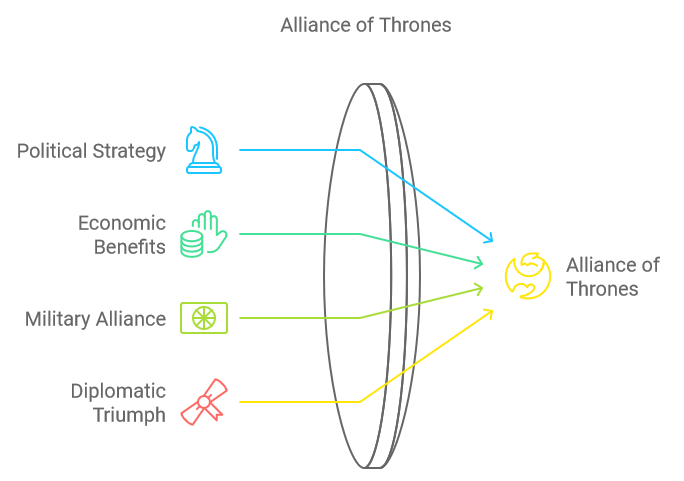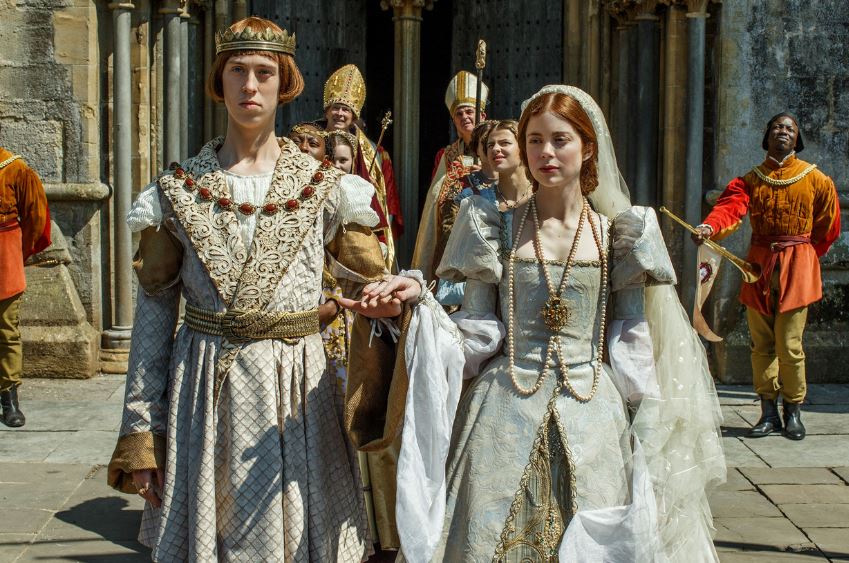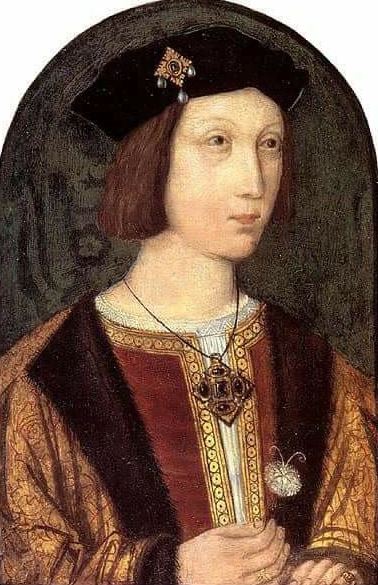Arthur Tudor, the eldest son of Henry VII and Elizabeth of York, was born into a position of immense significance in English history. As the heir to the newly established Tudor dynasty, his birth on September 20, 1486, was seen as a symbol of stability and the future prosperity of England following the turbulent Wars of the Roses. Arthur was groomed from an early age to be the future king, and his education, upbringing, and marriage to Catherine of Aragon were all part of a broader strategy to secure the Tudor legacy. His untimely death in 1502, however, altered the course of history, shifting the spotlight to his younger brother, who would become Henry VIII, a monarch whose decisions would shape the future of England and the wider world.
Early Life and Grooming as the Future King
Birth and Background
Arthur Tudor was born on September 20, 1486, less than a year after his father, Henry VII, secured the English throne by defeating Richard III at the Battle of Bosworth in 1485. His birth symbolized a new beginning for the kingdom, uniting the warring factions of York and Lancaster through his parents’ marriage. Arthur’s name was carefully chosen, evoking the legendary King Arthur, and reflecting the Tudor ambition to establish a new era of prosperity and stability【11†source】【12†source】.
The birth of a male heir so soon after the foundation of the Tudor dynasty was crucial in legitimizing Henry VII’s rule. It ensured the continuity of the Tudor line and promised to consolidate the fragile political situation in post-civil war England. Arthur’s life represented the hopes of a nation looking to move beyond years of conflict and uncertainty.
Education and Preparation for Kingship
Arthur’s upbringing was designed to mold him into the perfect king. From a young age, he was surrounded by some of the finest scholars and educators in England, receiving a humanist education that reflected the Renaissance ideals of the time. His tutors included prominent intellectuals like John Rede, and he was taught subjects such as theology, philosophy, history, and the classical languages【12†source】. Arthur was also instructed in statecraft, governance, and diplomacy, preparing him for his future role as monarch.
In 1493, at the age of seven, Arthur was formally invested as the Prince of Wales, a title traditionally given to the heir to the English throne. His court at Ludlow Castle became a center of regional governance in Wales, where Arthur began taking on responsibilities that mirrored those of a king-in-waiting. He was introduced to the intricacies of English politics and played a key role in fostering diplomatic relations, most notably through his marriage to Catherine of Aragon, which was intended to strengthen ties between England and Spain【11†source】【12†source】.

Marriage to Catherine of Aragon
Political Importance of the Union
On November 14, 1501, Arthur Tudor married Catherine of Aragon, daughter of King Ferdinand II of Aragon and Queen Isabella I of Castile. This marriage was one of the most significant political unions of the time, solidifying a powerful alliance between England and Spain. The marriage was not only a diplomatic triumph for Henry VII but also a strategic move to strengthen England’s influence in European affairs. Spain was emerging as a dominant power in the late 15th century, and this union promised mutual protection and economic benefits, aligning the two nations against common adversaries such as France【12†source】.
The marriage ceremony took place at St. Paul’s Cathedral in a grand celebration, symbolizing the hope and promise of a new era for England. Both Henry VII and Ferdinand II saw this alliance as a way to secure their respective kingdoms’ futures, ensuring peace, prosperity, and enhanced trade relations. Arthur’s marriage to Catherine underscored his role as a key player in the international political landscape of the time【11†source】【12†source】.
Life at Ludlow Castle
Following their marriage, Arthur and Catherine were sent to Ludlow Castle, the traditional residence of the Prince of Wales. There, Arthur took on his responsibilities as the governor of the Welsh Marches. His court at Ludlow was a small but significant center of power, where the young couple presided over regional governance. While their marriage was brief, it held great importance in the eyes of the English court, as Ludlow was the training ground for future monarchs【12†source】.
At Ludlow, Arthur and Catherine had the opportunity to experience the realities of royal life. Catherine, in particular, was beloved for her grace and dignity, adjusting well to her new role as Princess of Wales. However, their time together was cut short, as Arthur soon fell ill, and the young couple’s responsibilities at Ludlow were left unfulfilled.
Arthur’s Sudden Death
Date and Circumstances
Tragedy struck on April 2, 1502, when Arthur died unexpectedly at the age of 15 at Ludlow Castle. The cause of his death remains uncertain, though it is believed that he succumbed to a sudden illness that swept through the castle. News of his death reached the royal court on April 5, 1502, and the grief was profound. Henry VII and Elizabeth of York were devastated by the loss of their eldest son, whose death marked a significant shift in the future of the Tudor dynasty【12†source】.
Arthur’s passing was particularly shocking because, as the heir to the throne, his survival was crucial for the stability of the dynasty. His death left his younger brother, Henry, in line to inherit the throne, a role that Henry was not initially groomed for, creating both emotional and political turmoil in the court.
Debates Around the Cause of Death
The cause of Arthur’s death has been widely debated by historians. Some contemporary accounts suggest that Arthur may have died from tuberculosis, a common illness in the Tudor period. Other theories propose that he fell victim to the mysterious “sweating sickness,” an epidemic that was often fatal and swept through England in several outbreaks during the 15th and 16th centuries【10†source】.
The lack of medical knowledge at the time makes it difficult to pinpoint the exact cause. Contemporary physicians described Arthur’s illness as sudden and debilitating, with symptoms of fever and exhaustion. The theories surrounding his death remain speculative, but what is certain is that Arthur’s passing had a profound and lasting impact on England’s history【12†source】【11†source】.

The Impact of Arthur’s Death on English History
Succession and Henry VIII’s Rise
Arthur Tudor’s unexpected death in 1502 drastically altered the course of the Tudor dynasty. As the eldest son and heir to the throne, Arthur’s death left his younger brother, Henry, as the new heir—a position for which Henry had not been initially prepared. At the time of Arthur’s death, Henry was just 10 years old, and unlike Arthur, he had not been groomed for kingship. Arthur’s death forced Henry VII to shift his focus to his second son, resulting in Henry’s rapid education in matters of statecraft and governance.
When Henry VII died in 1509, Henry VIII ascended the throne, marking the beginning of a transformative reign in English history. Henry VIII’s personality and approach to kingship were drastically different from what Arthur’s might have been. While Arthur was seen as dutiful and serious, Henry VIII was known for his charismatic, bold, and often impulsive leadership style. The shift in succession led to long-lasting consequences for the Tudor dynasty and for English politics. Henry VIII’s reign was defined by dramatic religious reforms, including the break from the Catholic Church and the establishment of the Church of England, as well as his six marriages, which were driven by his desire for a male heir【12†source】【10†source】.
Catherine of Aragon’s Fate
Arthur’s death also had significant implications for his widow, Catherine of Aragon. Following his death, Catherine’s future was uncertain, as she was left in a precarious political position. Initially, her parents, Ferdinand and Isabella of Spain, sought to maintain the alliance with England. After much negotiation, Catherine eventually married Arthur’s younger brother, Henry, in 1509, shortly after he became king.
Catherine’s marriage to Henry VIII initially strengthened ties between England and Spain, but as the marriage progressed, it became strained due to Catherine’s inability to produce a surviving male heir. This failure led Henry VIII to seek an annulment, triggering a series of events that culminated in England’s break from the Roman Catholic Church. The desire for a male heir and the king’s subsequent marriages changed the religious landscape of England forever, leading to the Protestant Reformation and a century of religious and political turmoil【10†source】【12†source】.
Conclusion
Arthur Tudor’s life, though brief, had a profound impact on the trajectory of English history. His death not only shifted the line of succession but also set the stage for the transformative reign of Henry VIII. Arthur’s demise, and the subsequent marriage of his widow to Henry, led to the eventual split from the Catholic Church and the far-reaching religious and political consequences that followed.
Arthur’s early death invites tantalizing “what if” questions. Had Arthur survived to become king, England’s religious history might have taken a very different path, and the turbulence of Henry VIII’s reign, including his multiple marriages and the establishment of the Church of England, might have been avoided. Arthur’s survival could have led to a more stable, Catholic England, altering the course of European history.While Arthur’s life was short, its impact resonates throughout the centuries, making his death one of the pivotal moments in the history of the Tudor dynasty.
FAQ
1. Who was Arthur Tudor?
Arthur Tudor was the eldest son of Henry VII and Elizabeth of York, born in 1486. As the firstborn, he was the heir apparent to the English throne and was groomed to be the future king. His premature death in 1502, however, changed the course of English history.
2. Why was Arthur Tudor’s marriage to Catherine of Aragon important?
Arthur’s marriage to Catherine of Aragon was politically significant because it formed an alliance between England and Spain. The union strengthened ties between the two powerful nations, reinforcing England’s influence in European affairs at the time.
3. What caused Arthur Tudor’s death?
Arthur died on April 2, 1502, at Ludlow Castle. The exact cause of his death is still debated. Some historians suggest tuberculosis, while others believe he may have succumbed to the “sweating sickness,” a mysterious illness that affected England in the 15th and 16th centuries.
4. How did Arthur’s death affect the Tudor succession?
Arthur’s death made his younger brother, Henry, the new heir to the throne. Henry went on to become King Henry VIII, a monarch known for his significant impact on English history, particularly due to his six marriages and the establishment of the Church of England.
5. Did Catherine of Aragon remarry after Arthur’s death?
Yes, after Arthur’s death, Catherine of Aragon married his younger brother, Henry, who later became Henry VIII. This marriage initially solidified the alliance between England and Spain but eventually led to conflict when Henry VIII sought an annulment due to Catherine’s failure to produce a male heir.
6. What was the long-term impact of Arthur Tudor’s death on English history?
Arthur’s death shifted the royal succession to Henry VIII, whose reign brought significant religious and political upheaval. Henry’s decisions, including his break from the Catholic Church, dramatically changed the course of English history and led to the establishment of Protestantism in England.
7. How did Arthur Tudor’s death affect Catherine of Aragon?
Catherine’s life took a dramatic turn after Arthur’s death. Initially left in a precarious position, she eventually married Henry VIII. However, her inability to provide a male heir strained their marriage, leading to the famous annulment that sparked the English Reformation and England’s break from the Catholic Church.
8. What would have happened if Arthur Tudor had survived?
Had Arthur survived, it’s likely that England’s history would have taken a different path. Arthur was expected to be a more traditional, devout Catholic monarch. His reign might have prevented the religious turmoil caused by Henry VIII’s break from the Catholic Church, leaving England aligned with Catholic Europe.




